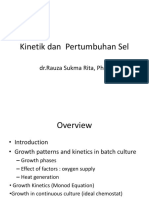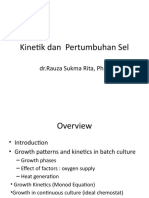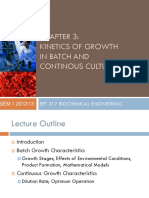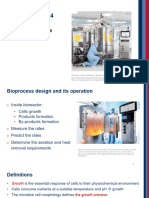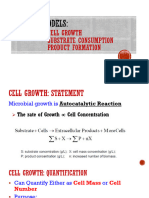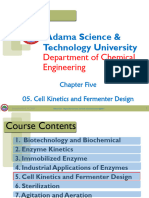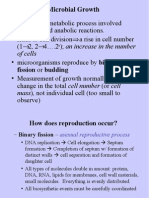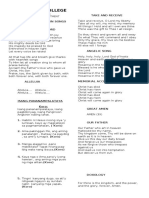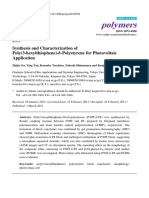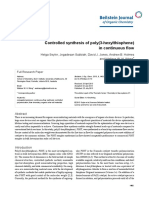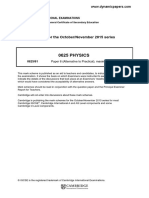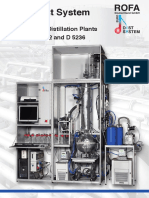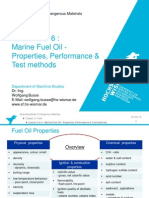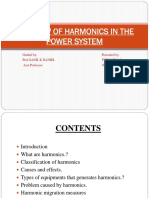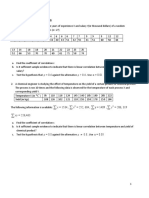0% found this document useful (0 votes)
205 views23 pagesStoichiometry of Microbial Growth and Product Formation
This document discusses microbial growth kinetics in batch culture. It describes the different growth phases including lag, exponential, deceleration, stationary, and death phases. It also discusses how cell concentration can be quantified and growth patterns for product formation including growth-associated, mixed growth-associated, and non-growth associated patterns. Key equations for modeling microbial growth and product formation are also presented.
Uploaded by
jeamnard balitaanCopyright
© © All Rights Reserved
We take content rights seriously. If you suspect this is your content, claim it here.
Available Formats
Download as PDF, TXT or read online on Scribd
0% found this document useful (0 votes)
205 views23 pagesStoichiometry of Microbial Growth and Product Formation
This document discusses microbial growth kinetics in batch culture. It describes the different growth phases including lag, exponential, deceleration, stationary, and death phases. It also discusses how cell concentration can be quantified and growth patterns for product formation including growth-associated, mixed growth-associated, and non-growth associated patterns. Key equations for modeling microbial growth and product formation are also presented.
Uploaded by
jeamnard balitaanCopyright
© © All Rights Reserved
We take content rights seriously. If you suspect this is your content, claim it here.
Available Formats
Download as PDF, TXT or read online on Scribd
/ 23




